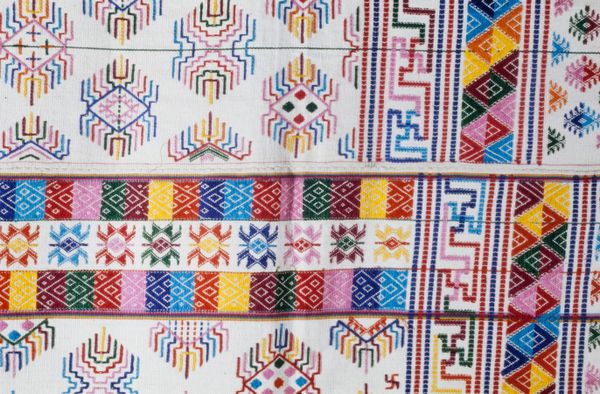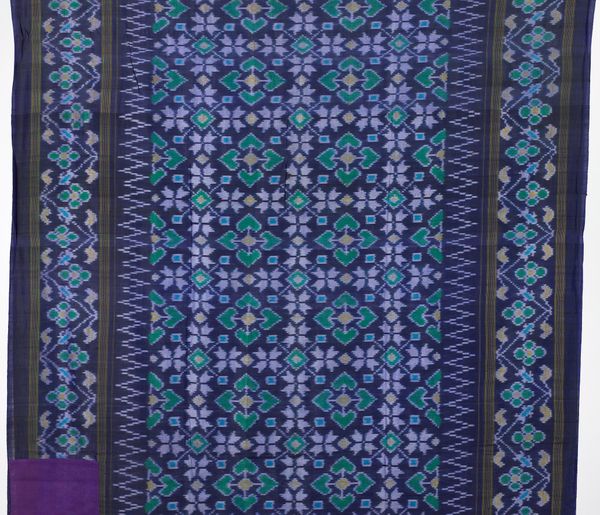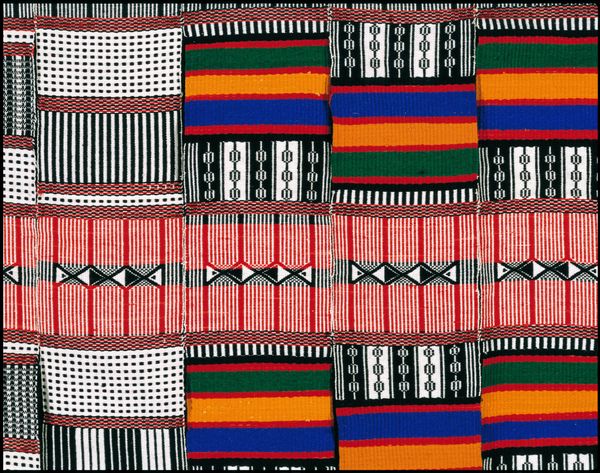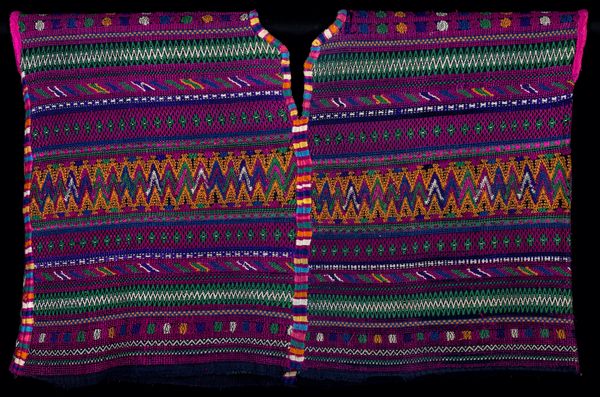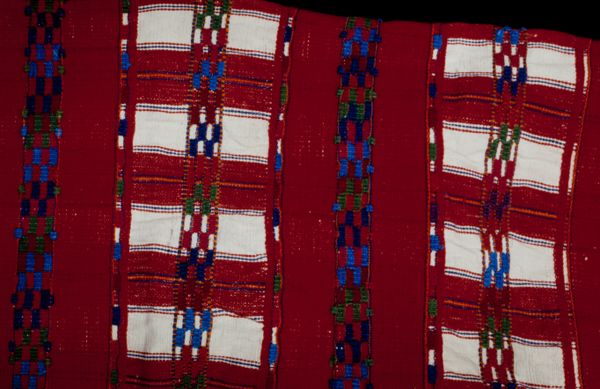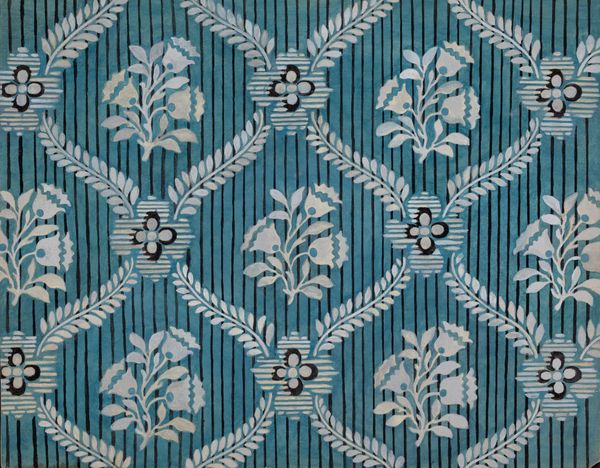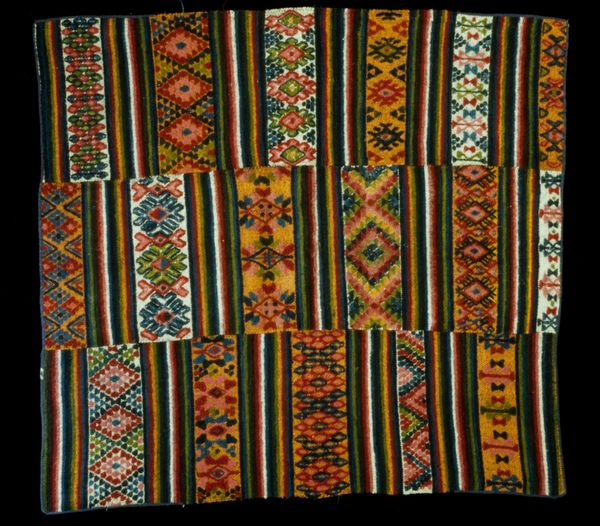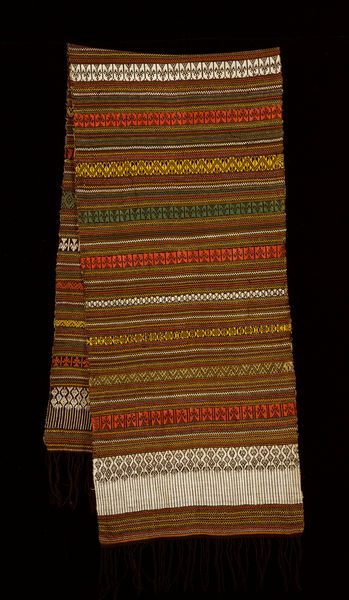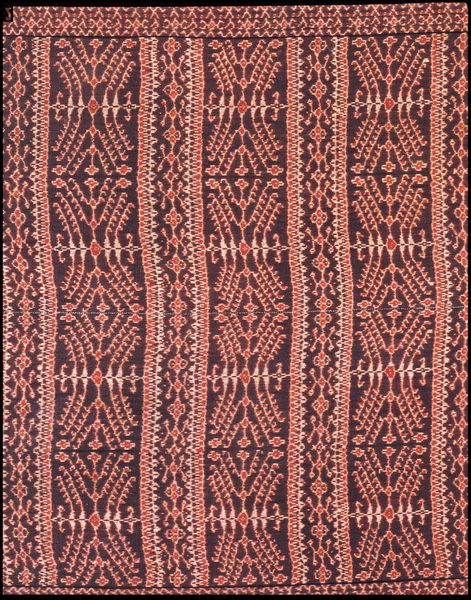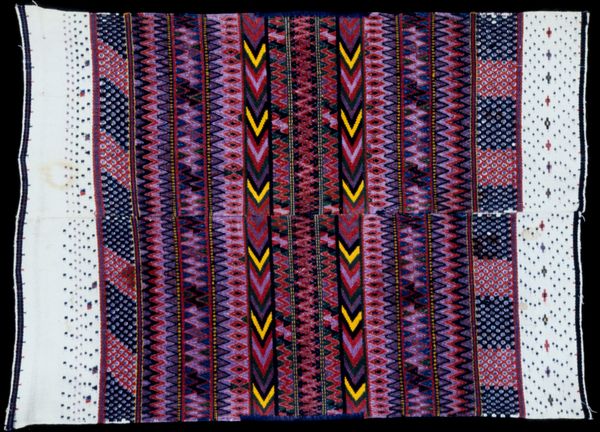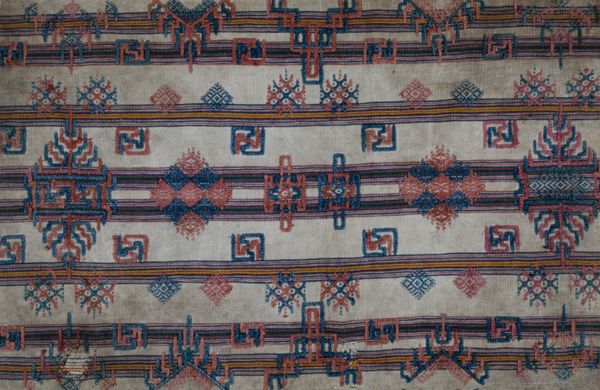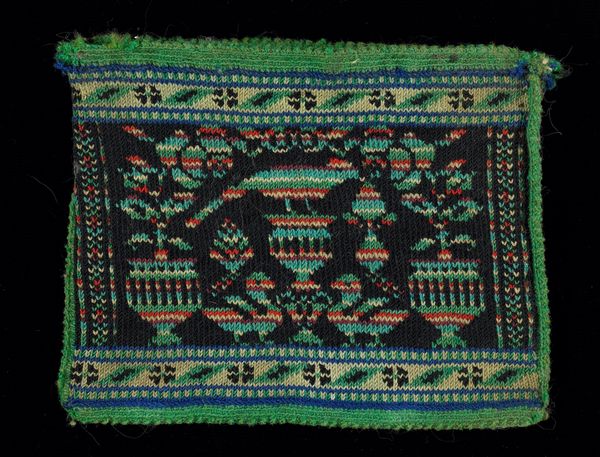
fibre-art, weaving, textile
#
fibre-art
#
weaving
#
textile
#
geometric pattern
#
abstract pattern
#
ethnic pattern
#
geometric
Dimensions: 104 x 52 1/2 in. (264.16 x 133.4 cm)
Copyright: Public Domain
Curator: Let's talk about this captivating "Woman's Dress (kira)," believed to be from around 1920 and currently residing here at the Minneapolis Institute of Art. Editor: It’s stunning. The immediate impression is the deep, almost regal blue and those intricate geometric patterns that pop against it. You can almost feel the texture just by looking. Curator: Indeed. It's a magnificent example of fiber art, predominantly silk and cotton. The weaving is just extraordinary, isn’t it? Reflecting what was called the "Orientalism" movement in art at that time and even weaving in styles common with Indigenous-American artistic creations. Editor: Absolutely. But beyond the artistry, I wonder about the hands that made this. The labor, the skill, and the time investment needed to create such a piece—it's staggering. We're talking about potentially months, perhaps even longer, for one single dress. Who was she? Curator: A valid point, thinking about the material conditions. These "kira" dresses were integral to Bhutanese women's attire. They carry deep social significance. These weren't mere decorations. The motifs weren't random—often laden with meaning tied to status, region, or family identity. Editor: And the wear! This isn’t just some display piece; it's meant to be worn, to move, to exist within a social sphere. What would a textile historian even do with this information when creating the displays themselves? Curator: Museum exhibitions need to acknowledge that dual existence - its power as an object of adornment versus the historical setting of Bhutan. How the rise of modern materials may have threatened or advanced traditional artisanship? Editor: That reminds us it's about more than just the final object. It's the process, the people, the stories woven into every thread that truly give it meaning. Curator: Precisely. Appreciating the piece on display as it is also helps to connect the cultural values of 1920 and our experience of it today. Editor: Well said. Makes you think about the future lives this object will lead.
Comments
No comments
Be the first to comment and join the conversation on the ultimate creative platform.
